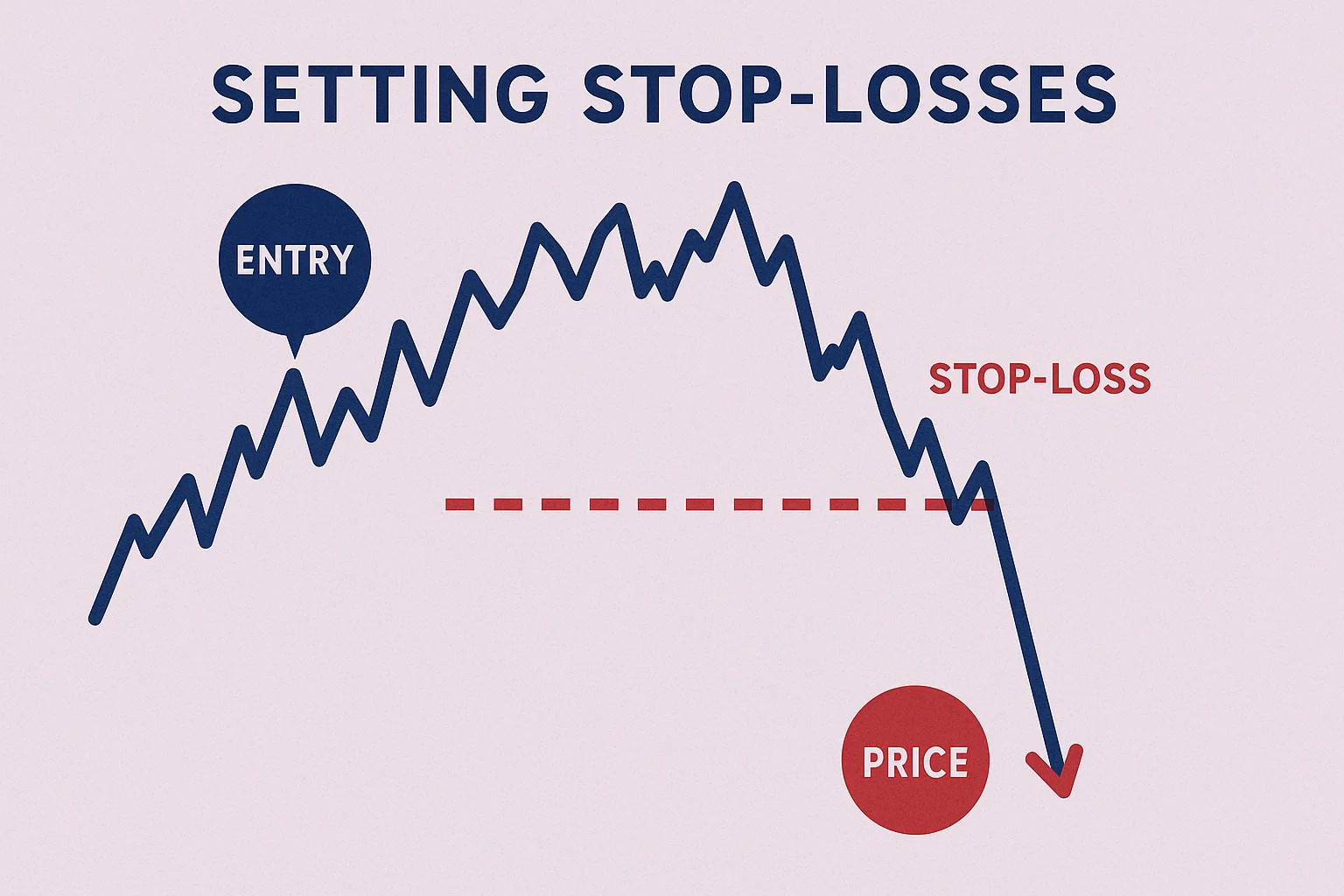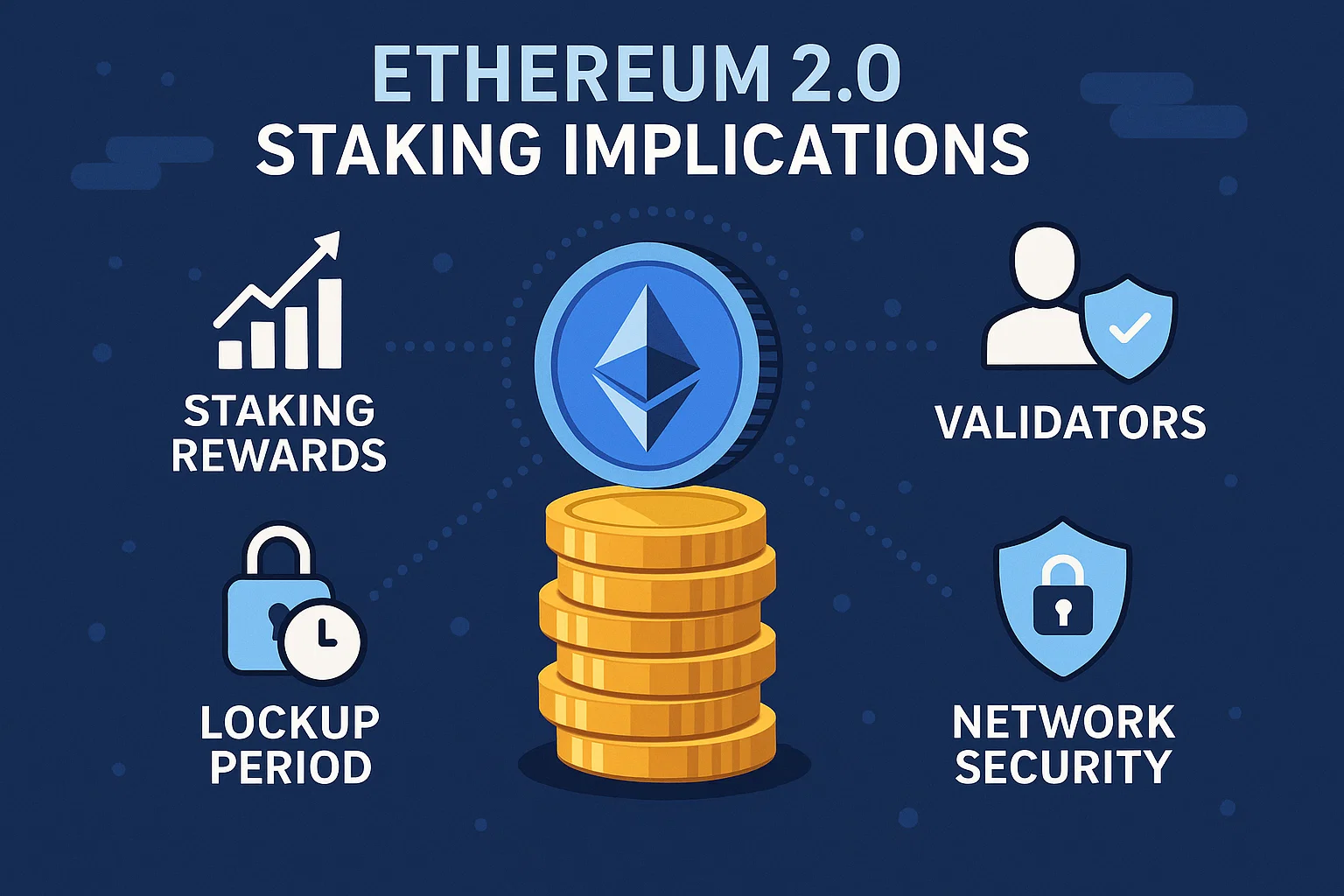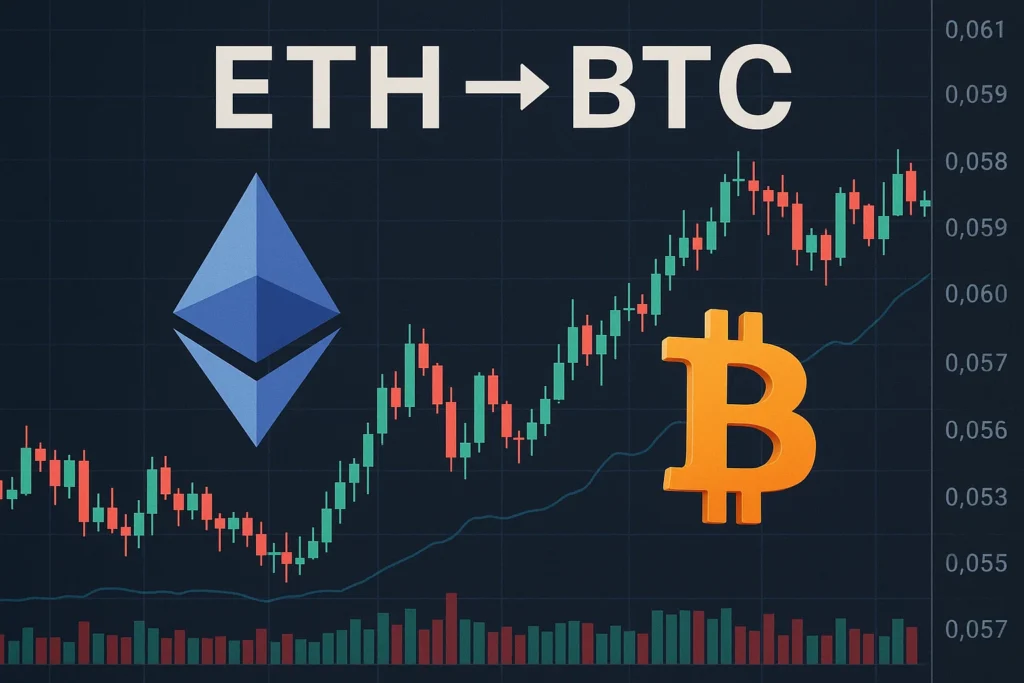The cryptocurrency market has undergone significant evolution, providing traders with numerous opportunities to capitalize on digital asset movements. Among the most popular trading pairs, Ethereum-to-Bitcoin trading stands out as a strategic approach that savvy investors use to optimize their portfolios. Whether you’re a seasoned trader or just beginning your crypto journey, understanding how to trade Ethereum for Bitcoin effectively can significantly impact your investment outcomes.
Ethereum-to-Bitcoin trading involves exchanging ETH for BTC or vice versa, capitalizing on the price fluctuations between these two dominant cryptocurrencies. This trading strategy has gained massive traction because both assets represent different use cases within the blockchain ecosystem—Bitcoin as digital gold and Ethereum as a programmable blockchain platform. As market dynamics shift, the ETH/BTC trading pair offers unique opportunities that differ from simply trading against fiat currencies. In this comprehensive guide, we’ll explore proven strategies, technical analysis techniques, and risk management practices that will help you navigate Ethereum to Bitcoin trading successfully.
What Is Ethereum To Bitcoin Trading?
Ethereum-to-Bitcoin trading refers to the process of exchanging one cryptocurrency for another without converting it to fiat currency. This type of crypto-to-crypto trading allows investors to capitalize on the relative performance between ETH and BTC. When you believe Ethereum will outperform Bitcoin, you trade BTC for ETH. Conversely, when Bitcoin shows stronger momentum, you convert your Ethereum holdings to Bitcoin.
The ETH/BTC trading pair represents the value of one Ethereum in terms of Bitcoin. For example, if the ETH/BTC pair is trading at 0.05, it means that one Ethereum is equivalent to 0.05 Bitcoin. This ratio fluctuates based on market sentiment, technological advancements, regulatory news, and broader economic factors that impact both cryptocurrencies.
Why Trade Ethereum Against Bitcoin?
Trading Ethereum against Bitcoin offers several advantages over traditional fiat trading:
Portfolio diversification becomes easier when you can quickly shift between different crypto assets. Instead of cashing out to dollars or euros and then buying another cryptocurrency, direct crypto-to-crypto trading eliminates unnecessary steps and potential fees.
Tax efficiency varies by jurisdiction, but in some regions, crypto-to-crypto trades may have different tax implications compared to crypto-to-fiat conversions. Always consult with a tax professional regarding your specific situation.
Market opportunities arise from the various fundamental drivers that affect each blockchain. Ethereum’s price often responds to DeFi trends, NFT activity, and network upgrades, while Bitcoin reacts to macroeconomic factors, institutional adoption, and its halving cycles.
The ETH/BTC Trading Pair Dynamics
The relationship between Ethereum and Bitcoin is complex and influenced by multiple factors. These dynamics are crucial for successful Ethereum-to-Bitcoin trading.
Market Correlation And Divergence
Bitcoin and Ethereum generally exhibit a positive correlation, meaning they often move in tandem. However, the magnitude and timing of these movements can differ significantly. During bull markets, Ethereum has historically shown higher volatility and larger percentage gains compared to Bitcoin. Conversely, during bear markets, Bitcoin often demonstrates more resilience as investors flee to the perceived safety of the original cryptocurrency.
Bitcoin dominance is a key metric that measures Bitcoin’s market capitalization as a percentage of the total crypto market. When Bitcoin dominance increases, it typically signals that traders are rotating funds from altcoins (including Ethereum) into Bitcoin. When dominance decreases, capital flows into alternative cryptocurrencies, potentially benefiting Ethereum.
Fundamental Factors Affecting The Pair
Several fundamental factors influence the ETH/BTC trading pair:
Network upgrades significantly impact prices. Ethereum’s transition to proof-of-stake through “The Merge” created substantial price movements in the ETH/BTC pair. Similarly, Bitcoin’s halving events, which occur approximately every four years, historically trigger primary price cycles.
Developer activity on each blockchain affects long-term value propositions. Ethereum’s active developer ecosystem and continuous innovation in smart contracts can drive price appreciation relative to Bitcoin.
Institutional adoption patterns differ between the two assets. Bitcoin has seen more traditional institutional investment through vehicles like spot ETFs, while Ethereum attracts enterprises interested in blockchain technology and innovative contract applications.
Technical Analysis For Ethereum To Bitcoin Trading
Mastering technical analysis is crucial for making informed Ethereum-to-Bitcoin trading decisions effectively.
Key Chart Patterns To Watch
Support and resistance levels on the ETH/BTC chart indicate price points where buying or selling pressure historically increases. Identifying these levels helps traders set entry and exit points. When the pair approaches a strong support level, it may present a buying opportunity. Conversely, resistance levels often signal potential selling points.
Trend lines help identify the overall direction of the ETH/BTC pair. An uptrend in this pair indicates that Ethereum is outperforming Bitcoin, while a downtrend suggests that Bitcoin is gaining relative strength. Trading with the trend increases your probability of success.
Moving averages smooth out price action and help identify trends. The 50-day and 200-day moving averages are significant. When the 50-day MA crosses above the 200-day MA (golden cross), it signals potential bullish momentum for Ethereum relative to Bitcoin. The opposite (death cross) suggests bearish conditions.
Essential Technical Indicators
Relative Strength Index (RSI) measures momentum and identifies overbought and oversold conditions. An RSI above 70 on the ETH/BTC pair suggests Ethereum may be overbought relative to Bitcoin, potentially signaling a correction. An RSI below 30 indicates oversold conditions and possible buying opportunities.
MACD (Moving Average Convergence Divergence) helps identify trend changes and momentum shifts. When the MACD line crosses above the signal line, it generates a bullish signal for the ETH/BTC pair. Bearish signals occur when the MACD crosses below the signal line.
Bollinger Bands measure volatility and potential price extremes. When the ETH/BTC price touches the upper band, it may indicate overbought conditions. Touches on the lower band suggest oversold conditions. Periods of tight band contraction often precede significant price movements.
Proven Strategies For Ethereum To Bitcoin Trading
Implementing effective strategies is crucial for achieving consistent success in Ethereum-to-Bitcoin trading.
Swing Trading Strategy
Swing trading involves holding positions for several days to weeks, capitalizing on medium-term price swings in the ETH/BTC pair. This strategy is well-suited for traders who cannot monitor markets constantly but can review charts daily.
The approach involves identifying support and resistance levels, entering positions when the pair bounces off support or breaks through resistance, and setting clear profit targets and stop-losses to manage risk. Swing traders typically aim for 5-15% gains per trade on the ETH/BTC pair.
Timing entries using multiple timeframe analysis improves success rates. Analyze the weekly chart for overall trend direction, the daily chart for identifying swing points, and the 4-hour chart for precise entry timing.
Trend Following Strategy
Trend following capitalizes on sustained directional movements in the ETH/BTC pair. This strategy assumes that trends tend to persist longer than most traders expect.
Enter positions when clear trends establish themselves, confirmed by moving average alignments and momentum indicators. Use trailing stop-losses to protect profits while allowing winners to run. The key is patience—trend followers avoid jumping in and out of positions, instead letting the market trend do the heavy work.
Mean Reversion Strategy
Mean reversion trading leverages the tendency of the ETH/BTC pair to revert to its average value after experiencing extreme movements. When the pair deviates significantly from its moving average, mean-reversion traders anticipate a snapback.
This strategy works particularly well in ranging markets where no clear trend exists. Identify overbought or oversold conditions using RSI or Bollinger Bands, enter positions expecting a return to the mean, and set tight stop-losses in case the deviation continues.
Fundamental Analysis Strategy
Fundamental analysis for Ethereum-to-Bitcoin trading involves monitoring developments that affect each blockchain’s value proposition. Stay informed about Ethereum network upgrades, DeFi total value locked (TVL), and gas fee trends. For Bitcoin, track institutional investment flows, mining difficulty adjustments, and regulatory developments.
When fundamental factors strongly favor one cryptocurrency over the other, taking a position based on this analysis can yield substantial returns over weeks or months.
Risk Management In Ethereum To Bitcoin Trading
Effective risk management separates successful traders from those who blow up their accounts.
Position Sizing
Never risk more than 1-2% of your total trading capital on any single Ethereum to Bitcoin trading position. If you have $10,000 in capital, your maximum loss on any trade should be $100-$200. Calculate position size based on your stop-loss distance to maintain this risk level.
Setting Stop-Losses

Stop-loss orders automatically exit positions when prices move against you, limiting potential losses. For swing trades on the ETH/BTC pair, place stops 3-5% below entry for long positions or 3-5% above entry for short positions. For longer-term positions, wider stops of 8-12% may be appropriate.
Diversification Across Strategies
Don’t put all your capital into a single trading approach. Allocate portions of your trading capital to different strategies—perhaps 40% to trend following, 30% to swing trading, and 30% to fundamental positions. This diversification smooths out returns and reduces risk.
Emotional Discipline
Emotional discipline is perhaps the most critical risk management tool. Fear and greed often cause traders to abandon their plans, chase losses, or prematurely exit winning positions. Develop a written trading plan for your Ethereum-to-Bitcoin trading activities, including entry criteria, exit rules, and position sizing guidelines. Follow this plan consistently, regardless of emotions.
Tools And Platforms For Ethereum To Bitcoin Trading
Selecting the right tools and platforms enhances your trading effectiveness.
Cryptocurrency Exchanges
Major exchanges offering ETH/BTC trading pairs include Binance, Coinbase Pro, Kraken, and Bitfinex. When choosing an exchange, consider the following factors: trading fees (typically 0.1-0.5% per trade), liquidity (higher liquidity means tighter spreads and better execution), security features (such as two-factor authentication and cold storage), and available order types (including limit, market, and stop-loss orders).
Charting And Analysis Tools
TradingView offers professional-grade charting, complete with all major technical indicators, for analyzing the ETH/BTC pair. The platform offers customizable alerts, pattern recognition tools, and a social community for sharing ideas and insights.
Coinigy aggregates data from multiple exchanges, allowing traders to analyze ETH/BTC across different platforms simultaneously. This helps identify arbitrage opportunities and ensures you’re getting the best execution.
Portfolio Tracking
CoinTracking and Delta help you monitor your Ethereum-to-Bitcoin trading performance, calculate profit and loss, and prepare tax reports. Accurate recordkeeping is essential for both performance improvement and regulatory compliance.
Common Mistakes To Avoid
Learning from common pitfalls can improve your Ethereum-to-Bitcoin trading success rate.
Overtrading
Many traders make too many trades, often out of boredom or the need for action. Each trade incurs fees and psychological stress. Focus on high-quality setups rather than quantity. Sometimes the best action is inaction.
Ignoring Market Context
Trading the ETH/BTC pair in isolation without considering broader market conditions is a mistake. When Bitcoin itself is in a strong downtrend against the dollar, even if Ethereum shows relative strength, both assets may decline in terms of fiat currency. Consider the overall market context before entering positions.
Failing To Adapt
Market conditions change. A strategy that worked brilliantly during a bull market may fail during periods of consolidation or bear markets. Successful traders continuously evaluate their approach and adapt to changing market dynamics.
Neglecting Transaction Costs
Frequent trading generates substantial exchange fees and potential tax liabilities. Determine whether your trading edge is substantial enough to offset these costs. Sometimes a simple buy-and-hold strategy outperforms active trading after accounting for all expenses.
Advanced Considerations For Ethereum To Bitcoin Trading
As you develop expertise, consider these advanced concepts.
Ethereum 2.0 Staking Implications
 Ethereum’s transition to proof-of-stake introduced staking, where ETH holders can earn rewards by locking their coins. This creates an opportunity cost for Ethereum to Bitcoin trading—when you trade ETH for BTC, you forgo staking rewards. Consider these potential earnings when making your trading decisions.
Ethereum’s transition to proof-of-stake introduced staking, where ETH holders can earn rewards by locking their coins. This creates an opportunity cost for Ethereum to Bitcoin trading—when you trade ETH for BTC, you forgo staking rewards. Consider these potential earnings when making your trading decisions.
Bitcoin’s Stock-To-Flow Model
Bitcoin’s scarcity model, exemplified by the stock-to-flow ratio, suggests that the value of Bitcoin increases after each halving event. Understanding these cyclical patterns helps with long-term Ethereum-to-Bitcoin trading positions. Historically, Bitcoin has outperformed in the year following a halving, while Ethereum has often shown relative strength during the latter stages of bull markets.
Network Effects And Valuation
Metcalfe’s Law suggests a network’s value is proportional to the square of its users. Monitor active addresses, transaction counts, and developer activity on both networks. When Ethereum’s network growth significantly exceeds Bitcoin’s, it may signal favorable conditions for accumulating ETH relative to BTC.
Tax Implications Of Ethereum To Bitcoin Trading
Understanding tax obligations prevents costly surprises.
In most jurisdictions, crypto-to-crypto trading is a taxable event. When you trade Ethereum for Bitcoin, you’re essentially selling Ethereum and buying Bitcoin, potentially triggering capital gains or losses. The difference between your Ethereum purchase price and its value at the time of trading determines your gain or loss.
Maintain detailed records of all trades, including dates, amounts, prices, and transaction fees, to ensure accurate tracking and reporting. Many countries calculate taxes based on FIFO (First In, First Out) or specific identification methods. Tax software specialized for cryptocurrency can automate much of this recordkeeping.
Consult with a tax professional familiar with cryptocurrency regulations in your jurisdiction. Tax treatment varies significantly between countries and continues to evolve.
Future Outlook For Ethereum To Bitcoin Trading
The landscape for Ethereum-to-Bitcoin trading continues to evolve with technological and regulatory developments.
Ethereum’s roadmap includes further scalability improvements through sharding and layer-2 solutions. These upgrades could enhance Ethereum’s utility and value proposition relative to Bitcoin.
The development of Bitcoin’s Lightning Network aims to make Bitcoin more practical for everyday transactions, potentially affecting its value relative to Ethereum.
Regulatory clarity around both cryptocurrencies will impact institutional adoption and relative valuations. Bitcoin’s clearer regulatory status as a commodity may attract more conservative institutional investors, whereas Ethereum’s DeFi ecosystem continues to face ongoing regulatory scrutiny.
Macroeconomic factors increasingly influence both cryptocurrencies. Bitcoin is often viewed as “digital gold”—a hedge against inflation and currency debasement. Ethereum’s correlation with risk assets, such as technology stocks, has been stronger. Understanding these different market roles helps predict relative performance during various economic conditions.
Conclusion
Mastering Ethereum to Bitcoin trading requires a combination of technical analysis skills, fundamental understanding, disciplined risk management, and emotional control. The ETH/BTC trading pair offers unique opportunities to capitalize on the different characteristics and market cycles of these two leading cryptocurrencies.
Success in Ethereum to Bitcoin trading doesn’t come from perfect prediction but from consistent application of proven strategies, proper position sizing, and continuous learning. Start with small positions as you develop your skills, keep detailed records of your trades, and regularly review your performance to identify areas for improvement.
Read more: Ethereum Price Decline Analysis: Will ETH Drop Continue?


